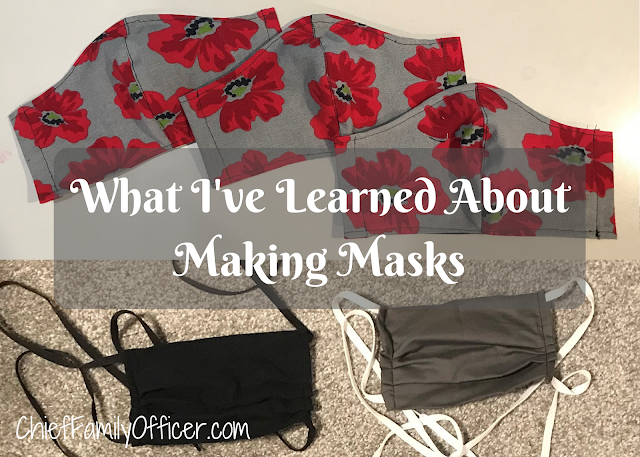If you don't want to sew, there are many no-sew mask options out there. Just do a quick search for instructions.

If you do want to sew your own masks, here's a summary of what I've learned these last few weeks:
MATERIALS
There has been at least one study on the best materials to use in making masks, but it's not definitive. The NY Times has a good summary here.
My takeaway was that any tightly woven material would work. My preferred material has been tea towels and pillowcases, but it all depends on what you have access to. The masks I've been making have a pocket for a removable filter, which I've been making out of polypropylene reusable shopping bags (I bought these). It seems debatable whether the filter actually adds more protection, but the pocket is there and the filter doesn't make it harder to breathe, so I've been sticking with it.
Also, I've been washing the fabric in hot water before doing any cutting and sewing.
HOW-TO
Before all this, I had very little sewing experience. Twenty years ago, before YouTube showed you how to do everything, I tried to learn how to sew but I was terrible at it. I didn't even understand how a sewing machine worked (even after a class in which I made a pair of pants that was ten sizes too big). I would never have tried sewing again if it weren't for this pandemic and our inability to get masks for a few weeks.
I've been following the instructions in this Craft Passion tutorial, and watched the YouTube instructional video closely. If you make these masks, consider ironing the fabric where she uses her fingers to spread the seams. The first mask I made included the little tunnel at the top of the mask for a nosewire, but it got so thick that it was difficult to position my glasses properly. And I've found that the masks fit fine without the wire.
Unfortunately, these masks aren't working well for my husband, so I've been trying my hand at pleated masks. They seem to work best with elastic loops for the ears, but I can't get my hands on any. (I finally bit the bullet and ordered some from a third-party vendor on Amazon, and ended up with some kind of glass LG screen protector instead, so that was a total fail.) I'm now using shoe laces in place of the elastic to make ties, but I'm not sure how they'll hold up through multiple washings. After reviewing various videos and tutorials, I tried this method, which is super simple because you only need one piece of fabric. They're proving relatively easy to make and I can churn these out quickly.

The pleated masks are at the top, and the Craft Passion masks are at the bottom. You can't really tell, but the folded black mask is a size large, while the other two are size medium. Craft Passion also has a size small pattern for kids.
EQUIPMENT
To the best of my memory, my mom didn't do any sewing beyond repairing buttons and small holes when I was growing up, but she always had a well-stocked sewing basket. So between that seeming like the thing to do and my aborted sewing experiment years ago, I had a lot of supplies on hand, including fabric scissors, a seam ripper, pins, and thread. What I no longer had was a sewing machine, so I bought a mini machine at Amazon. It wasn't the easiest thing to use, but it worked well enough for me to be able to sew four or five masks - which was enough for me to know that I liked it enough and could do it well enough to keep sewing throughout the pandemic if necessary. By that time, the bobbin basket filled up with lint and I couldn't figure out how to clean it, so I ended up with a bunch of skipped stitches.
So we invested in a "real" sewing machine - a heavy duty Singer model that's worked well. I churned out six masks for my hospitalized relative in just a few days, and I've made more since. I've been able to purchase tea towels, shoelaces, and ribbon, but it's been much harder getting good quality thread and sewing accessories (I can't find extra bobbins anywhere, and the edge footer I ordered over a week ago still hasn't shipped). Sewing machines also seem to be in short supply, unfortunately.
WASHING
I've read that you should wash reusable masks after each use, and I also try to wash them before the first use. I put the masks in lingerie bags before putting them in the washer. Usually I just throw them in with clothes and wash on warm water, with the theory that it's really the soap and not the temperature of the water that's killing any virus particles. I pin the masks on a clothesline to dry, although I've accidentally tossed a couple in the dryer and they've been fine.
If you've been thinking about sewing masks, I hope this gives you confidence, because if I can do it, anyone can do it!





No comments:
Post a Comment